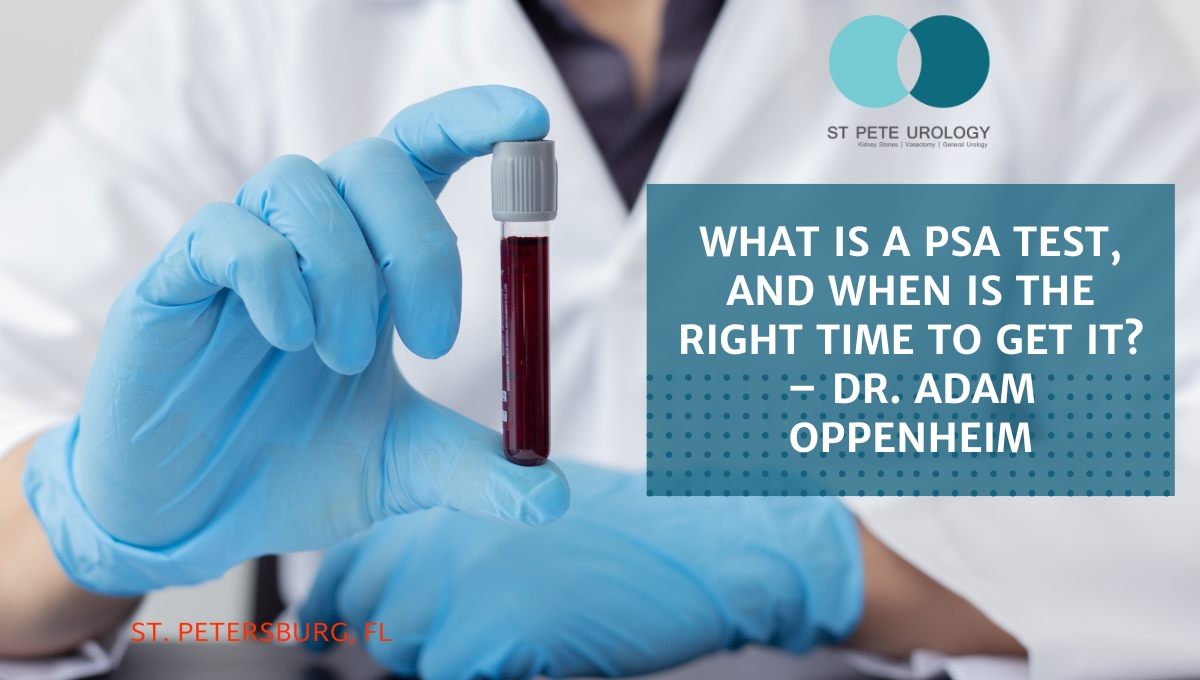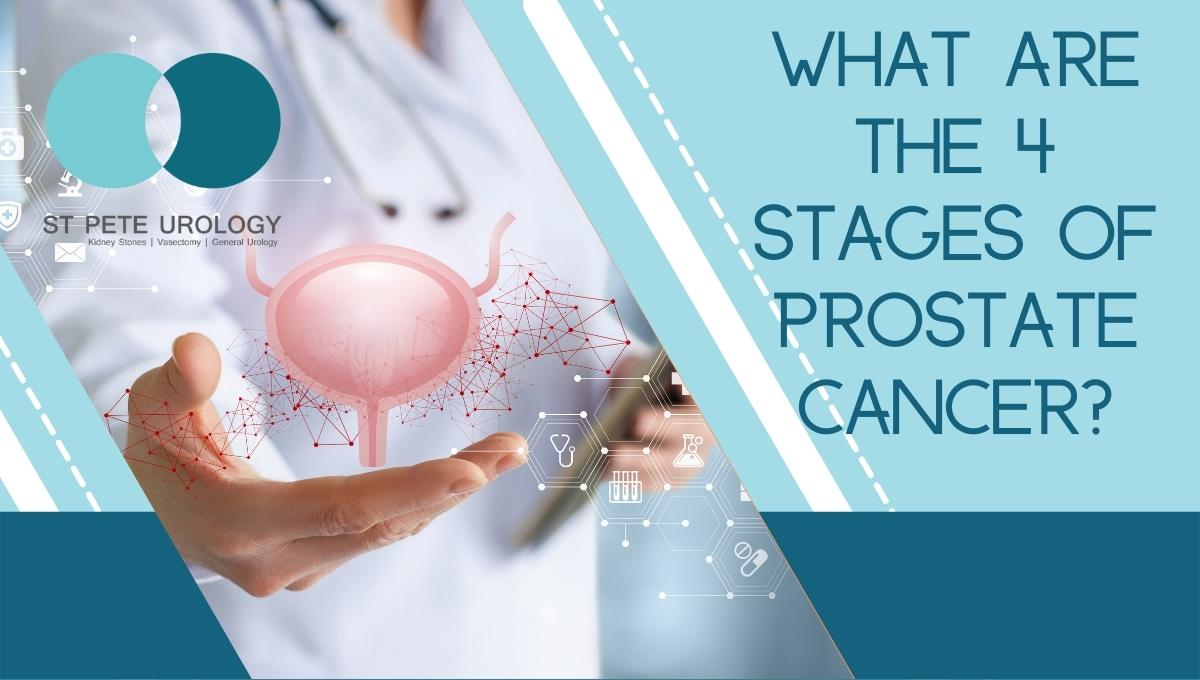Understand how can prostatitis be prevented and why is it significantly more beneficial than managing and treatment of the condition.
Continue readingWhat Are the Different Types of Prostate Problems? – Dr. Adam Oppenheim
What is a PSA Test, and When is the Right Time to Get It? – Dr. Adam Oppenheim
What are the 4 stages of prostate cancer?
What are the key signs of prostate cancer?
7 Tips for Keeping a Healthy Prostate


All men, no matter their age, can find themselves dealing with a prostate issue, which is why every man should be concerned about his prostate health. Fortunately, there are easy ways to prevent or reduce the risk of developing prostate health problems.
Here are 7 tips for keeping your prostate healthy:
1. Eat more fruits and vegetables
Fruits and vegetables are great sources of anti-inflammatory and anticancer compounds, such as polyphenols, antioxidants, minerals, vitamins and fiber. Plants that boost prostate health are plentiful and include favorites such as tomatoes, broccoli, cauliflower, bok choy, cabbage, Brussels sprouts, pink grapefruits, watermelons, papaya and guava. Equally powerful are green leafy vegetables like spinach, lettuce, spring mix and kale which contain cancer-killing ingredients such as folic acid, vitamin D, turmeric and curcumin. Be sure to add fruits and vegetables to your everyday meals to boost your prostate health!
2. Eat more plant proteins and cut down on animal fat
You should avoid diets that are high in animal fat, including dairy products and red meat. Heavy consumption of red meat increases your risk of prostate cancer. So go for lean proteins, such as fish and chicken, but avoid grilled meat since grilling produces carcinogens that can inflame your prostate. Instead try baking, steaming, or broiling your meat.
High animal fat intake reduces antioxidant production in the body. And since it is the antioxidants that help to maintain a healthy prostate, excess fat diminishes prostate health. A good option for a healthy prostate is fish, which contains omega-3 acids that minimize the risk of prostate problems. Fish such as tuna, herring or salmon are good choices, but if fish is not your thing, then walnuts and flaxseed can be great sources of omega-3 acids.
Ideally, you should go for whole, natural foods that provide a lot of fiber. Soy is also good for your prostate and you can get it through sources like soy nuts, soy flour or tofu. Likewise, you should eat foods rich in selenium such as wheat germ, tuna, beef liver, eggs, sunflower, cashews, sesame seeds, mushrooms, onions, garlic and kidneys. Selenium boosts prostate health and minimizes the risk of prostate cancer.
3. Achieve a healthy weight
Obesity has been associated with various prostate health issues, including prostate cancer. If you are overweight, cutting back your weight, particularly abdominal fat, reduces the risk of BPH. In fact, if you desire to shrink your prostate size and get relief from annoying urinary symptoms, weight loss is valuable. Weight loss also helps reduce the risk of prostate cancer and relieves prostatitis.
4. Regular exercise
Moderate or vigorous activity minimizes the risk of BPH, urinary tract symptoms and prostatitis. Regular exercise also decreases stress, releases tension, improves immune function and maintains healthy hormone levels, all of which are important for a healthy prostate.
Aim for at least 30 minutes of moderate or intense physical activity every day. Try walking, swimming, running or bicycling, and make sure your exercise routine is not boring by varying your activities and even inviting friends to join you.
5. Drink tea
Both green tea and hibiscus tea contain potent antioxidants. Studies show that regular intake of tea helps with prostatitis, BPH and prostate cancer. Green tea also slows down the growth of aggressive prostate cancer.
Make sure to choose caffeine free sources of tea since caffeine irritates both the prostate and bladder and worsens symptoms of prostatitis. As a measure to cut down on caffeine intake, make sure to reduce energy drinks, coffee and soda.
Like tea, water is also great for the prostate. Drinking plenty of water will help you remain hydrated and enjoy normal prostate function. Make sure to drink at least 8 glasses of water every day, and to increase water intake during and after exercise.
6. Avoid smoking
Smoking affects every cell in your body. In fact, when cigarettes are burned, they are complete carcinogens. While smoking has less effect on low-grade or benign prostate cancer, it increases the risk of fatal prostate cancer. The heaviest smokers have 24-30 percent higher risk of death from prostate cancer than non-smokers. Smoking also increases the risk of prostate cancer progress after diagnosis.
Studies also show that smoking indirectly promotes benign prostatic hyperplasia (BPH) and increases prostate inflammation. Apart from smoking, alcohol use and inadequate sleep may adversely affect your prostate health. Also, a healthy sex life is good for your prostate.
7. Talk to your doctor
Do you have family history of prostate cancer? Let your doctor know. Remember that having a father or brother who has had prostate cancer more than doubles your risk of developing the disease. Speak with your doctor about your risk of prostate issues and explore the medical screening tests you should undergo as you age, follow dietary recommendations and be alert to any risk factors.
If you intend to begin a new exercise program, make sure to inform your urologist about it. Your doctor should know if you are experiencing symptoms such as:
- Discomfort or pain anywhere in your rectal or pelvic area
- Blood in your urine or semen
- Difficulty or pain when urinating
Are you or your loved one suffering from a prostate problem? St Pete Urology offers specialty urology services in a state-of-the-art facility and surgery center in St. Petersburg, Florida. We provide the latest innovations in surgical techniques and medical technology, delivering comprehensive care to those with urologic conditions. For more information about the prostate gland, BPH and prostate cancer, visit the St Pete Urology website.
How do you keep your prostate healthy?


The prostate is also the organ where the most common form of cancer for men develops. This cancer affects many men and the chances of developing it increase with age. The prostate also grows in size as men age. The rate and side effects of this growth can vary, but the most common symptoms are difficulty urinating and having to urinate frequently.
Given the importance of the prostate’s role and how easily it can develop problems, good prostate health is important. Luckily, there are simple lifestyle changes that can help improve prostate and overall health. These changes start with diet and exercise. There is a great deal of evidence that diet can help determine prostate health as well as cancer risk. It is recommended to have at least five servings of fruits and vegetables a day. Whole-grain bread and pastas are also recommended.
Protein is an important food group and eating the right kinds of protein plays a big role in prostate health. It is recommended to limit the intake of red and processed meats. Healthier sources of protein include fish, chicken, beans and eggs. Like protein, consuming the right fats is important, too. Healthy fats from olive oil, nuts, and avocados are much better than fats from animal byproducts or the trans fats found in fast food.
Sugar, salt and exercise play a role in prostate health as well. Sugary drinks like soda should be limited or cut out completely. Sweets in general should be an occasional treat, not a food group in your diet. Salt intake should be cut down for prostate health and keep in mind that most processed foods are very high in salt content.
Exercise is also important for maintaining good prostate health. There is evidence that regular exercise helps bring down the risk of stroke, heart disease and certain types of cancer.
Small changes to diet and exercise can add up to big health improvements, but there is still more you can do. Another important tool in keeping your prostate healthy is having a good relationship with your urologist. Yearly prostate exams and an open dialogue with a trusted urologist is key to maintaining prostate health and resolving issues early, before they turn into serious health problems. The urologists at St Pete Urology are dedicated to helping you keep your prostate healthy.
What Does the Prostate Gland Do?


Despite its small size, it does important work for the reproductive system. The primary function of the prostate is to produce and secrete prostate fluid, which is one of the main components of semen. This fluid, which makes up one-third of semen’s volume, contains important enzymes that aid sperm.
The enzymes are referred to as Prostate Specific Antigens (PSA) and help to prevent semen from thickening after ejaculation. The more liquid semen allows sperm to move freely, increasing the chances of its success.
The muscles of the prostate help propel semen. During ejaculation sperm moves from the testicles to the prostate. The prostate then will contract, closing the bladder’s opening to the urethra so the prostate can release the semen through the urethra.
When in good health, the prostate is an important part of the male reproductive system. However, it is prone to a few conditions that are most likely to increase as men age. The most common is enlarging of the prostate. Prostate growth affects virtually all men over age 50. It can cause difficulty urinating and the need for frequent urination. There are medicines that can help treat an enlarged prostate if symptoms get bad enough to warrant treatment.
Another common health issue is prostate cancer. Other than skin cancer, prostate cancer is the most common form of cancer in men. Fortunately, only one in 41 men diagnosed with prostate cancer dies, meaning survival rates are better than in many other forms of cancers. Prostate cancer can be treated with surgery, chemotherapy, radiation and hormone therapy. In some cases, when the cancer is not aggressive or spreading, doctors may recommend leaving the cancer alone and just monitoring it with your urologist.
Given its importance in the human body, good prostate health is important. Having your prostate checked once a year by a urologist should be a part of men’s annual health maintenance as they get older. Having a good relationship with your urologist is important. Urologists like those at St Pete Urology are dedicated to their patients’ best interest and overall health. They are specialists who can help with planning, treatment and any issues that may arise with the prostate. For more information, visit the St Pete Urology website.
Prostate Cancer: Symptoms and Signs
What is Prostate Cancer?
Prostate cancer only affects men because it occurs in the prostate, a small gland located below the bladder that produces the male seminal fluid to nourish and transport sperm.
What Are The Symptoms of Prostate Cancer?
Some cases of prostate cancer are silent. However, there are signs that might indicate the condition:
- Urinary and Other Problems:
- difficulty starting or maintaining a steady stream of urine
- frequent urination and leakage of urine
- excessive nighttime urination urge
- leaking small amounts of urine
- weak urination stream or straining to empty the bladder
- blood in the urine or seminal fluid
- onset of erectile dysfunction
- discomfort when sitting
Risk factors
Factors that may increase your risk of prostate cancer include:
- Age
- Family history
- Race
- Obesity
Prostate cancer is one of the most common types of cancer affecting men. When detected early and still contained to the prostate gland, it usually grows slowly. When initially confined to the prostate gland, it may not cause major harm. Prostate cancer that has been detected early has a better chance of successful treatment.
Treatment and Diagnosis
If you or your loved one is experiencing the signs or potential risk factors, it is best to make an appointment with a urologist. The urologist can take a biopsy, which is the only sure way to know if you have cancer. Additional steps that your doctor may employ include:
- A PSA test
- A DRE (this is a manual exam)
- Biomarker tests
Like any cancer, early detection and intervention are key to resolving it. If not caught and treated early, the cancer can metastasize or spread.
Untreated, prostate cancer can spread to nearby organs such as the bladder, or to the bones or other organs, through your bloodstream or lymphatic system. If prostate cancer reaches the bones, it can cause pain and broken bones. As prostate cancer advances, it can be treated and somewhat controlled but it is unlikely to be cured at a later stage.
Prostate Cancer Prevention
Doctors recommend the following changes to prevent prostate cancer. These recommendations are healthy lifestyle changes for all individuals:
- Choose a healthy diet full of fruits, vegetables and whole-grain foods.
- Avoid high-fat foods.
- Exercise at least 3 to 4 times a week.
- Maintain a weight that is healthy for your body mass.
Men who face a higher risk of prostate cancer may consider medications or other treatments. Your urologist may prescribe 5-alpha reductase inhibitors. Not only do these drugs reduce the overall risk of developing prostate cancer through controlling prostate gland enlargement, they also may reduce hair loss.
Many men would rather avoid prostate exams and knowing if they have prostate cancer. They may fear that if cancer is detected they will experience impotency or incontinence because of treatment. However, recent medical developments have made such concerns unnecessary. To learn more about prostate problems, visit the St Pete Urology website or make an appointment for a consultation.
What are 5 warning signs of testicular cancer?
Symptoms of testicular cancer
Testicular cancer does not always exhibit any symptoms and when it does, its symptoms are similar to those of non-cancerous conditions or inflammations. For these reasons, testicular cancer is often diagnosed at a late stage.
Any one or a combination of the following symptoms should serve as warning signs:
1. Lump and swelling in the testicle
A painless lump or a swelling, or a general change in the size of the testes is one sign of testicular cancer. It is not unusual for one testicle to seem larger than the other. However, a noticeable change from what is usually the normal size of either testes should be treated as a warning sign.
2. Pain or discomfort in the scrotum
Ordinarily a lump or swelling does not cause pain. In some cases of testicular cancer, however, patients report an ache in the scrotum holding the affected testes. It also could be a feeling of heaviness in the scrotum causing discomfort.
3. Enlargement and tenderness of breasts
In rare instances, the presence of testicular tumors encourages the development of breast tissue. This is a condition known as gynecomastia.
4. Accumulation of fluid in the scrotum
A sudden and perceptible collection of fluid in the scrotum should be treated as a red flag.
5. Pain in the groin area, abdomen or lower back
This occurs as an extension of the pain in the testes, if any. It also occurs if the cancer has spread from the testes to the lymph nodes around the groin and the abdomen.
It is noteworthy that the symptoms described above could arise from a non-cancerous condition. That may be reassuring news, but any symptoms also should be considered with caution, because they make testicular cancer that much harder to detect. It is advisable to see a urologist if you have experienced any of the above symptoms, if only to eliminate the presence of testicular cancer. Experienced urologists at St Pete Urology can offer help and treatment for urological problems. Their pool of trained urologists can offer consultation and guidance with any questions and concerns you may have. For more information about testicular cancer, visit the St Pete Urology website.











